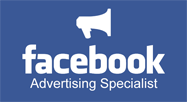Chances are your budget is limited, and you want to spend your money in the way that’s going to have the most impact on your bottom line. But not having a clear goal in mind is one of the primary ways companies make mistakes in allotting their budget. For instance, just saying that you “want more traffic” is not enough. Just about any website can increase it’s number of visitors, but if that traffic doesn’t convert, it’s lost revenue and opportunity, and leaves less in your budget for what really makes a difference.
What is Conversion?
When someone visits your site, you want them to take some action: buy something, download something, sign up for something. The total number of visitors to your website who follow through with some desired action is considered a conversion. Visitors who click on your ad, view your landing page, and then leave without completing the desired action are not conversions; these are the people your website is losing for whatever reason. They’re the lost income, the lost leads, who may or may not ever come back to you.
Your conversion rate is the number of site visitors that result in completion of the desired action—whether it’s adding an item to their shopping cart and following through with a purchase, downloading a demo, signing up for a newsletter, or submit their info for a follow-up contact.
Calculate Conversion Rate
Calculate the conversion rate by taking the ratio of the number of people who convert divided by the total number of visitors to the site for a given period. For example, if you have 100 visitors a week, and 12 of those download your demo, your website conversion rate for the week would be 12/100=.12%. The goal is to be working towards a higher conversion rate.
Information at the Point of Action
You want your site visitors to download a free demo, so they’ll use it, see how great it is, and come back to buy the full-featured version. The Point of Action is the place where the action happens: that download button. You also want your site visitors to know that they get free tech support with every download. Your site has this information, but it’s way down at the bottom of the page. Many visitors won’t read far enough down the page to learn just how much support they’ll get, so put the statement where it needs to be: next to the download button. In this situation, the POA is closely related to the Call to Action (CTA) and should work hand-in-hand. Sites with a clear CTA and important information at the POA are the ones with the highest conversion rates.
While you will likely have more than one POA, one will be more valuable. Downloading the demo is more desirable than signing up for the newsletter. Some visitors will show interest in your POA by clicking through, but won’t follow through with the download though they may sign up for the newsletter. Monitoring your “take rate” as opposed to your “conversion rate” tells you how many people showed interest in your Point of Action, even if they didn’t follow through to completion. Improving your site’s CTA can naturally improve your take rate, and your conversion rate will follow.
Improve conversion rates
In order to improve your website’s conversion rate, you first need to investigate those that fail to convert. Why do they leave? Not only that, but where do they leave? Is it the shopping cart page, or do potential customers not even get that far? Chances are there is some usability roadblock or feature on your site that can be improved or eliminated in order to actualize a higher conversion rate. Making the check-out process simpler, reducing the need for personal information, keeping forms short, adding clearly defined calls-to-action, and multiple opportunities to sign-up, download, or purchase can make it easier for potential customers to do just what you want them to do.
Integration
Take action by determining what the obstacles are, or may be, and remove them or change them, one at a time if necessary. This testing of one variable at a time is called A/B testing. A more complex form of testing multiple variables at once is known as multivariate testing. There is no limit to the number of things on a website that can be changed, such as images, color schemes, copy, and calls-to-action, and it’s important to be methodical in order to understand your results.
One thing to keep in mind is that your ultimate goal for the website is not to create one that appeals to your family members, coworkers, or even yourself, but to appeal to what your visitors want and expect. Keep this goal in mind and your rates will improve.



